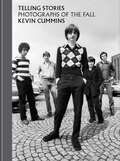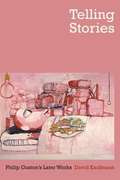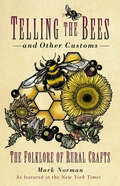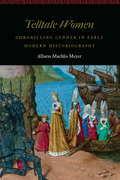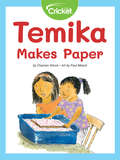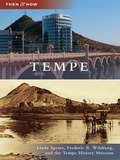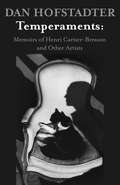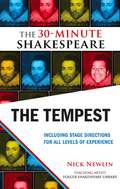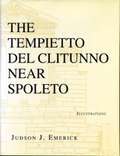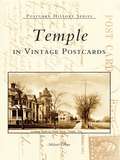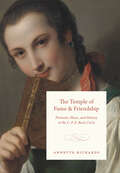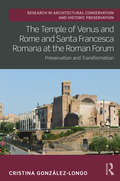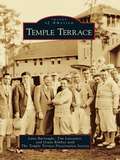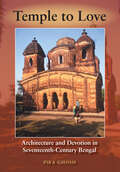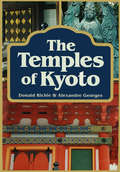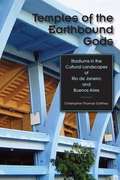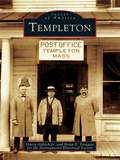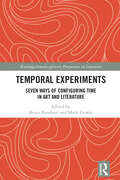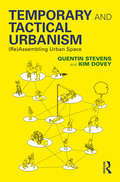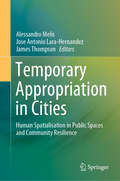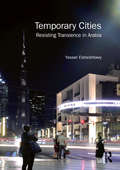- Table View
- List View
Telling Stories: Photographs of The Fall
by Kevin Cummins'No one has captured the look of alternative UK music over the past half a century more tellingly than Kevin Cummins.' - Simon Armitage'Kevin Cummins is a true master in being able to capture the essence of music, the soul of the band. Whatever he does however he does it is a mystery to me but it's pure genius.' - Rankin'Few photographers had such a close connection to The Fall as Manchester-based Kevin Cummins, and his new book, Telling Stories, is a rich visual history of one of the city's most beloved and enduring bands.' - Record Collector Magazine 'Kevin has the uncanny ability of capturing the inner mood of musicians. Be it the dynamics within a pensive Joy Division, or the sense surrounding the fledgeling Fall that something special was around the corner for us all. Kevin's book is nothing less than a remarkable document of a bewildering and defiant anti-fashion movement born in Prestwich, north Manchester in the grimy mid-70s.' - Marc Riley'Capturing forty years of the band's career via his archive, the legendary photographer (whose recent book, Juvenes, documented the story of Joy Division) gives his take on the phenomenon of The Fall and the late, great Mark E. Smith.' - Vive le Rock Contains never-before-seen images.Foreword by Simon Armitage, Poet Laureate. From chaotic early gigs to their final years, NME photographer Kevin Cummins provides a definitive, unique perspective on cult favourites The Fall. In this stunning visual history spanning four decades, discover how and why they emerged as one of the most innovative, boundary-breaking bands in modern music.With a foreword by Poet Laureate and Fall fan Simon Armitage and an interview with Eleni Poulou, as well as never-before-seen images from Cummins' archive, this is the ultimate visual companion to The Fall.
Telling Stories: Photographs of The Fall
by Kevin Cummins'No one has captured the look of alternative UK music over the past half a century more tellingly than Kevin Cummins.' - Simon Armitage'Kevin Cummins is a true master in being able to capture the essence of music, the soul of the band. Whatever he does however he does it is a mystery to me but it's pure genius.' - Rankin'Few photographers had such a close connection to The Fall as Manchester-based Kevin Cummins, and his new book, Telling Stories, is a rich visual history of one of the city's most beloved and enduring bands.' - Record Collector Magazine 'Kevin has the uncanny ability of capturing the inner mood of musicians. Be it the dynamics within a pensive Joy Division, or the sense surrounding the fledgeling Fall that something special was around the corner for us all. Kevin's book is nothing less than a remarkable document of a bewildering and defiant anti-fashion movement born in Prestwich, north Manchester in the grimy mid-70s.' - Marc Riley'Capturing forty years of the band's career via his archive, the legendary photographer (whose recent book, Juvenes, documented the story of Joy Division) gives his take on the phenomenon of The Fall and the late, great Mark E. Smith.' - Vive le Rock Contains never-before-seen images.Foreword by Simon Armitage, Poet Laureate. From chaotic early gigs to their final years, NME photographer Kevin Cummins provides a definitive, unique perspective on cult favourites The Fall. In this stunning visual history spanning four decades, discover how and why they emerged as one of the most innovative, boundary-breaking bands in modern music.With a foreword by Poet Laureate and Fall fan Simon Armitage and an interview with Eleni Poulou, as well as never-before-seen images from Cummins' archive, this is the ultimate visual companion to The Fall.
Telling Stories: Philip Guston's Later Works
by David KaufmannGuston was best known for abstract work and cartoons. In this book, the author follows the development of his painting from the early 1960s until the artist's death in 1980 and explores his intense and complicated relationship to Judaism.
Telling the Bees and Other Customs: The Folklore of Rural Crafts
by Mark NormanThroughout the history of civilisation, traditional crafts have been passed down from hand to skilled hand. Blacksmithing, brewing, beekeeping, baking, milling, spinning, knitting and weaving: these skills held societies together, and so too shaped their folklore and mythology.Exploring the folklore connected with these rural crafts, Telling the Bees examines the customs, superstitions and stories woven into some of the world’s oldest trades. From the spinning of the Fates to the blacksmith’s relationship with the devil, and the symbolism of John Barleycorn to a ritual to create bees from the corpse of a cow – these are the traditions upon which our modern world was built.
Telling the Design Story: Effective and Engaging Communication
by Amy HuberWhen presenting projects in competitive design environments, how you say something is as important as what you’re actually saying. Projects are increasingly complex and designers are working from more sources, and many designers are familiar with the struggle to harness this information and craft a meaningful and engaging story from it. Telling the Design Story: Effective and Engaging Communication teaches designers to craft cohesive and innovative presentations through storytelling. From the various stages of the creative process to the nuts and bolts of writing for impact, speaking skills, and creating visuals, Amy Huber provides a comprehensive approach for designers creating presentations for clients. Including chapter by chapter exercises, project briefs, and forms, this is an essential resource for students and practicing designers alike.
Telltale Women: Chronicling Gender in Early Modern Historiography (Women and Gender in the Early Modern World)
by Allison Machlis MeyerTelltale Women fundamentally reimagines the relationship between the history play and its source material as an intertextual one, presenting evidence for a new narrative about how—and why—these genres disparately chronicle the histories of royal women. Allison Machlis Meyer challenges established perceptions of source study, historiography, and the staging of gender politics in well-known drama by arguing that chronicles and political histories frequently value women&’s political interventions and use narrative techniques to invest their voices with authority. Dramatists who used these sources for their history plays thus encountered a historical record that offered surprisingly ample precedents for depicting women&’s perspectives and political influence as legitimate, and writers for the commercial theater grappled with such precedents by reshaping source material to create stage representations of royal women that condemned queenship and female power. By tracing how the sanctioning of women&’s political participation changes from the narrative page to the dramatic stage, Meyer demonstrates that gender politics in both canonical and noncanonical history plays emerge from playwrights&’ intertextual engagements with a rich alternative view of women in the narrative historiography of the sixteenth and seventeenth centuries.
Temika Makes Paper
by Charnan Simon Paul MeiselTemika and her family are big on recycling paper. Temika and her brother Tyler are ready to argue about where paper comes from – trees or recycled paper. Mom says they’re both right! Dad suggests they make their own paper so that Temika can use it for her Grandma’s birthday card. Mom teaches them how to make homemade paper from scraps of white paper, colored construction paper, and even flowers!
Tempe
by Linda Spears Tempe History Museum Frederic B. WildfangCharles Trumbull Hayden built the first canal on the south side of the Salt River in 1870. Soon after, he built a store, a flour mill, and a cable ferry across the river, and he started a town. Since then, Tempe has changed from a small farming community to a lively urban center. Moreover, Tempe's residential growth has made it the seventh-largest town in Arizona. Author Frederic B. Wildfang documents the history. Photographer Linda Spears illustrates the changes.
Temperaments: Memoirs of Henri Cartier-Bresson and Other Artists
by Dan HofstadterIn these five profiles, four of which originally appeared in the New Yorker, the author evokes the life and work of seven gifted artists. Among those presented, often through lively conversations, are Jean Hélion, Mark Rothko, R.B. Kitaj, and Dennis Creffield. Chief among those portrayed however is Henri Cartier-Bresson (1908-2004), the great French photographer and photojournalist who, famed for dodging contact with the press, is here sketched in rare and fond detail. Of all these artists, only two still live: what emerges from this book is a picture, often bizarre, often hilarious, of a bygone bohemian world.
The Tempest
by Nick NewlinThe Tempest: The 30-Minute Shakespeare offers eight scenes from this rich comedy. Beginning with the magical storm and shipwreck, this adaptation includes the uproarious discovery of the monster Caliban and his plot to kill Prospero. Included are the heartfelt marriage vows between Ferdinand and Miranda, the disguised antics of fairy Ariel, and Prospero's poetic abjuration of his rough magic. The edition includes a preface by Nick Newlin containing helpful advice on how to put on a Shakespeare performance in a high school class with novice actors as well as an appendix with suggestions for the specific play and recommendations for further resources.
The Tempietto del Clitunno near Spoleto
by Judson EmerickThis is the first full-length study of the enigmatic Early Medieval chapel near the river Clitunno in central Umbria. Judson Emerick makes the Tempietto del Clitunno, a celebrated art-historical test case, the focus of a study that penetrates to the deep structure of the discipline.For centuries scholars have puzzled over the chapel's lavish Corinthian column screens, the crosses surrounded by Neo-Attic vine scrolls in its pedimental reliefs, and the Christian Latin inscriptions in huge Neo-Augustan block capitals from its friezes. The sixteenth-century humanists who named the building the "Tempietto del Clitunno" treated it as an ancient Roman temple that the Christians later converted. But modern art historians, learning that the Tempietto had been built from the ground up as a chapel, declared it an anomaly, the product of a most startling and unexpected Early Christian and medieval classical revival.Emerick intervenes by critiquing the notion of classical revival in medieval architecture. Impatient with the old Enlightenment historical plot that makes the Tempietto into a dark-age prodigy, Emerick boldly redescribes the architectural record to take away the Tempietto's strangeness. He shows conclusively that the chapel's orders, pedimental reliefs, and inscriptions conform to ancient Roman Imperial Corinthian standards, but then goes on to show that just this Corinthian decorative system was frequent, even normal in festive, public, Christian cult rooms from Constantine's day down through the twelfth century.History of style as an end in itself yields here to style treated as political phenomenon. Emerick turns to the frescoes on the Tempietto's rear apse wall for clues to the builders' political goals. He explains how grandees from the medieval Lombardo-Frankish Duchy of Spoleto, full participants in a Christian theocratic state, set up an array of Mediterranean icons inside the Tempietto to enhance their social and political control. The chapel's Corinthian decorative system, he concludes, must be integral to this political program.
The Tempietto del Clitunno near Spoleto
by Judson EmerickThis is the first full-length study of the enigmatic Early Medieval chapel near the river Clitunno in central Umbria. Judson Emerick makes the Tempietto del Clitunno, a celebrated art-historical test case, the focus of a study that penetrates to the deep structure of the discipline.For centuries scholars have puzzled over the chapel's lavish Corinthian column screens, the crosses surrounded by Neo-Attic vine scrolls in its pedimental reliefs, and the Christian Latin inscriptions in huge Neo-Augustan block capitals from its friezes. The sixteenth-century humanists who named the building the "Tempietto del Clitunno" treated it as an ancient Roman temple that the Christians later converted. But modern art historians, learning that the Tempietto had been built from the ground up as a chapel, declared it an anomaly, the product of a most startling and unexpected Early Christian and medieval classical revival.Emerick intervenes by critiquing the notion of classical revival in medieval architecture. Impatient with the old Enlightenment historical plot that makes the Tempietto into a dark-age prodigy, Emerick boldly redescribes the architectural record to take away the Tempietto's strangeness. He shows conclusively that the chapel's orders, pedimental reliefs, and inscriptions conform to ancient Roman Imperial Corinthian standards, but then goes on to show that just this Corinthian decorative system was frequent, even normal in festive, public, Christian cult rooms from Constantine's day down through the twelfth century.History of style as an end in itself yields here to style treated as political phenomenon. Emerick turns to the frescoes on the Tempietto's rear apse wall for clues to the builders' political goals. He explains how grandees from the medieval Lombardo-Frankish Duchy of Spoleto, full participants in a Christian theocratic state, set up an array of Mediterranean icons inside the Tempietto to enhance their social and political control. The chapel's Corinthian decorative system, he concludes, must be integral to this political program.
Temple in Vintage Postcards
by Michael LefanFounded in 1881 by the Gulf, Colorado & Santa Fe Railway Company, Temple, Texas became a railroad town overnight. The company purchased 181 acres and then auctioned off parcels to prospective buyers interested in providing services for railroad equipment and passengers. Though early on Temple had several unfortunate nicknames--"Mudville," "Tanglefoot," and "Ratsville"--it soon shed its image as a muddy, rat-infested land, became a major junction for four railway lines, and offered a land of opportunity for commerce. The railway would bring flattering new nicknames like "Progressive Temple" and "Prairie Queen" as well as a chance to be part of the American Dream.
The Temple of Fame and Friendship: Portraits, Music, and History in the C. P. E. Bach Circle
by Annette RichardsThis book examines the renowned portrait collection assembled by C. P. E. Bach, J. S. Bach’s second son. One of the most celebrated German composers of the eighteenth century, C. P. E. Bach spent decades assembling an extensive portrait collection of some four hundred music-related items—from oil paintings to engraved prints. The collection was dispersed after Bach’s death in 1788, but with Annette Richards’s painstaking reconstruction, the portraits once again present a vivid panorama of music history and culture, reanimating the sensibility and humor of Bach’s time. Far more than a mere multitude of faces, Richards argues, the collection was a major part of the composer’s work that sought to establish music as an object of aesthetic, philosophical, and historical study. The Temple of Fame and Friendship brings C. P. E. Bach’s collection to life, giving readers a sense of what it was like for visitors to tour the portrait gallery and experience music in rooms thick with the faces of friends, colleagues, and forebears. She uses the collection to analyze the “portraitive” aspect of Bach’s music, engaging with the influential theories of Swiss physiognomist Johann Caspar Lavater. She also explores the collection as a mode of cultivating and preserving friendship, connecting this to the culture of remembrance that resonates in Bach’s domestic music. Richards shows how the new music historiography of the late eighteenth century, rich in anecdote, memoir, and verbal portrait, was deeply indebted to portrait collecting and its negotiation between presence and detachment, fact and feeling.
The Temple of Fame and Friendship: Portraits, Music, and History in the C. P. E. Bach Circle
by Annette RichardsThis book examines the renowned portrait collection assembled by C. P. E. Bach, J. S. Bach’s second son. One of the most celebrated German composers of the eighteenth century, C. P. E. Bach spent decades assembling an extensive portrait collection of some four hundred music-related items—from oil paintings to engraved prints. The collection was dispersed after Bach’s death in 1788, but with Annette Richards’s painstaking reconstruction, the portraits once again present a vivid panorama of music history and culture, reanimating the sensibility and humor of Bach’s time. Far more than a mere multitude of faces, Richards argues, the collection was a major part of the composer’s work that sought to establish music as an object of aesthetic, philosophical, and historical study. The Temple of Fame and Friendship brings C. P. E. Bach’s collection to life, giving readers a sense of what it was like for visitors to tour the portrait gallery and experience music in rooms thick with the faces of friends, colleagues, and forebears. She uses the collection to analyze the “portraitive” aspect of Bach’s music, engaging with the influential theories of Swiss physiognomist Johann Caspar Lavater. She also explores the collection as a mode of cultivating and preserving friendship, connecting this to the culture of remembrance that resonates in Bach’s domestic music. Richards shows how the new music historiography of the late eighteenth century, rich in anecdote, memoir, and verbal portrait, was deeply indebted to portrait collecting and its negotiation between presence and detachment, fact and feeling.
The Temple of Venus and Rome and Santa Francesca Romana at the Roman Forum: Preservation and Transformation (Routledge Research in Architectural Conservation and Historic Preservation)
by Cristina González-LongoThis book examines the influence of architectural design in the conservation of historic buildings by discussing in detail an important building complex in Rome: the Temple of Venus and Rome, the monastery of Santa Maria Nova and the church of Santa Francesca Romana. As the most complete site in the Roman Forum that has reached our times with a rich architectural stratification almost intact, it is a clear product of continuous preservation and transformation and it has not been studied in its complexity until now. The Temple of Venus and Rome and Santa Francesca Romana at the Roman Forum unravels the original designs and the subsequent interventions, including Giacomo Boni’s pioneering conservation of the monastery, carried out while excavating the Roman Forum in the early twentieth century. The projects are discussed in context to show their significance and the relationships between architects and patrons. Through its interdisciplinary focus on architectural design, conservation, archaeology, history and construction, this study is an ideal example for scholars, students and architects of how to carry out research in architectural conservation.
Temple Terrace (Images of America)
by 999 Lana Burroughs Grant Rimbey Tim LancasterThe influential and adventurous Chicago socialite Mrs. Potter Palmer (Bertha) struck out for Florida in 1910, eventually buying thousands of acres of land across the state. In 1914, after setting up residence in Sarasota, she established Riverhills, a hunting preserve on 19,000 acres in the area now known as Temple Terrace. Local historians believe it was Palmer's vision to create one of America's first planned golf course communities, where every Mediterranean Revival villa sold would include its own grove. Intended to provide a hobby and part-time income for the wealthy Northerners lured to the Sunshine State, 5,000 acres were planted with the exotic hybrid Temple orange--making up the largest citrus grove in the world at the time. The new city was named after the orange and for the sloping terrain of the land along the Hillsborough River.
Temple to Love: Architecture and Devotion in Seventeenth-Century Bengal
by Pika Ghosh"[A]n excellent analytical study of a sensationally beautiful type of temple.... This work is not just art historical but embraces... religious studies, anthropology, history, and literature." --Catherine B. Asher"[A]dvances our knowledge of... Bengali temple building practices, the complex inter-reliance between religion, state power, and art, and the ways in which Western colonial assumptions have distorted correct interpretation.... A splendid book." --Rachel Fell McDermottIn the flux created by the Mughal conquest, Hindu landholders of eastern India began to build a spectacularly beautiful new style of brick temple, known as Ratna. This "bejeweled" style combined features of Sultanate mosques and thatched houses, and included second-story rooms conceived as the pleasure grounds of the gods, where Krishna and his beloved Radha could rekindle their passion. Pika Ghosh uses art historical, archaeological, textual, and ethnographic approaches to explore this innovation in the context of its times. Includes 82 stunning black-and-white images of rarely photographed structures.Published in association with the American Institute of Indian Studies
The Temples of Kyoto
by Donald Richie Alexandre GeorgesThe Temples of Kyoto takes you on a journey through these environs and presents twenty-one of these marvelous structures that are unique creations which, while quintessentially Japanese, somehow speak a universal languagereadily appreciated by people the world over. Donald Richie, called by Time magazine, "the dean of art critics in Japan," turns his attention to these twenty-one temples with scholarship and an eye for the dramatic. Drawingoff such classic sources as The Tale of Genji and Essays in Idleness, he takes the reader on a tour through the ages, first with a comprehensive history of Japanese Buddhism, and then by highlighting key events in the development of these "celestial-seeming cities." From the Tendai warrior-priests of Enryaku-ji to the floating vision of paradise at Byodo-in, to the magical gardens of Tofuku-ji, the past springs into the present and the temples truly take on a life of their own in a thrilling narrative that weaves fact and legend into a guide as entertaining as it is informative. Brilliant photographs of the temples, taken by the award-winning photographer Alexandre Georges, complement the text and provide a visual overview of the subject matter. His keen eye captures on film the elements that make each temple noteworthy, including their interiors, and objets d'art, in a fresh and thought provoking manner. The result is this book: a testament and meditation on the power and elegance of these world-renowned structures that are both places of worship and examples of the finest art Japan has ever produced.
Temples of the Earthbound Gods
by Christopher Thomas GaffneyIn Rio de Janeiro, the spiritual home of world football, and Buenos Aires, where a popular soccer club president was recently elected mayor, the game is an integral part of national identity. Using the football stadium as an illuminating cultural lens, Temples of the Earthbound Gods examines many aspects of urban culture that play out within these monumental architectural forms, including spirituality, violence, rigid social norms, anarchy, and also expressions of sexuality and gender. Tracing the history of the game in Brazil and Argentina through colonial influences as well as indigenous ball courts in Mayan, Aztec, Zapotec, Mixtec, and Olmec societies, Christopher Gaffney's study spans both ancient and contemporary worlds, linking the development of stadiums to urbanization and the consolidation of nation building in two of Latin America's most intriguing megacities.
Templeton
by Brian P. Tanguay Harry Aldrich Jr. Narragansett Historical SocietyThe villages of Templeton, originally called Narragansett, were founded in the mid-eighteenth century along the banks of the region's rivers and ponds. With adequate water power, agriculture and industry flourished, producing hay, corn, wool, paper, bricks, iron kitchenware, and all types of furniture. Templeton shares the history of the villages through the vintage photographs of Oren Williams and Wallace Underwood, two professional photographers who captured life there from the late 1800s to the early years of the twentieth century. Highlights include John Boynton, village tinsmith who founded Worcester Polytechnic Institute; the Templeton Hotel, which was destroyed by fire in 1888; and the Narragansett House, a popular destination for sleighing and school parties.
Temporal Experiments: Seven Ways of Configuring Time in Art and Literature (Routledge Interdisciplinary Perspectives on Literature)
by Bruce Barnhart Marit GrøttaTemporal Experiments: Seven Ways of Configuring Time in Art and Literature conducts an expansive exploration of different modes of timing. Its seven chapters pursue the question of time as it is embodied in key figures that shape both aesthetic and pragmatic life. Working closely with literary, visual, and musical artworks, the book aims to provoke new ways of engaging with the question of time. It treats artworks as experiments that launch temporal figures, and that test out the possibilities and connections these different figures enable. Thus, the book seizes upon works by artists like Anne Carson, King Tubby, and Raymond Queneau as opportunities for thinking through the valence of both existing and untested temporal configurations. What other modes of shaping time, it asks, might be conjured out of the viewing of an Omer Fast film, the reading of a poem by Baudelaire, or of a novel by Tom McCarthy? In treating artworks as temporal experiments, this book stresses the fact that artworks always experiment with the raw materials of time, fashioning it or refashioning it into novel combinations. This book follows the imperatives of these experiments in order to advance a nuanced understanding of the way time insinuates itself into all aspects of social and intellectual life.
Temporary and Tactical Urbanism: (Re)Assembling Urban Space
by Quentin Stevens Kim DoveyTemporary and Tactical Urbanism examines a key set of urban design strategies that have emerged in the twenty-first century. Such projects range from guerrilla gardens and bike lanes to more formalised temporary beaches and swimming pools, parklets, pop-up plazas and buildings and container towns. These practices enable diverse forms of economic, social and artistic life that are usually repressed by the fixities of urban form and its management. This book takes a thematic approach to explore what the scope of this practice is, and understand why it has risen to prominence, how it works, who is involved, and what its implications are for the future of city design and planning. It critically examines the material, social, economic and political complexities that surround and enable these small, ephemeral urban interventions. It identifies their short-term and long-term implications for urban intensity, diversity, creativity and adaptability. The book's insights into temporary and tactical urbanism have particular relevance in the context of the COVID-19 pandemic, which has highlighted both the need and the possibility of quickly transforming urban spaces worldwide. They also reveal significant lessons for the long-term planning and design of buildings, landscapes and cities.
Temporary Appropriation in Cities: Human Spatialisation in Public Spaces and Community Resilience
by Alessandro Melis Jose Antonio Lara-Hernandez James ThompsonThis book conceptualises and illustrates temporary appropriation as an urban phenomenon, exploring its contributions to citizenship, urban social sustainability and urban health. It explains how some forms of appropriation can be subversive, existing in a grey area between legal and illegal activities in the city. The book explores the complex and the multi-scalar nature of temporary appropriation, and touches on its relationship to issues such as: sustainability and building re-use; culture; inclusivity, including socio-spatial inclusion; streetscape design; homelessness; and regulations controlling the use of public spaces. The book focuses on temporary appropriation as a necessity of adapting human needs in a city, highlighting the flexibility that is needed within urban planning and the further research that should be undertaken in this area. The book utilises case studies of Auckland, Algiers and Mexico City, and other cities with diverse cultural and historical backgrounds, to explore how planning, design and development can occur whilst maintaining community diversity and resilience. Since urban populations are certain to grow further, this is a key topic for understanding urban dynamics, and this book will be of interest to academics and practitioners alike.
Temporary Cities: Resisting Transience in Arabia (Planning, History and Environment Series)
by Yasser ElsheshtawyAre Arab Gulf cities, the likes of Dubai, Abu Dhabi or Doha, on their way to extinction? Is their fate obsolescence? Or, are they the model for our urban future? Can a city whose very existence is predicated on an imported labour force who build and operate these gleaming urban centres remain a viable urban entity? Could the transient nature of this urban model, its temporariness and precariousness, also be its doom? In this wide-ranging book Yasser Elsheshtawy takes on these tough, but necessary, questions aiming to examine the very nature of the Arab Gulf city and whether it can sustain its existence throughout the twenty-first century. Having lived in the region for more than two decades he researched its marginalized and forgotten urban settings, trying to understand how a temporary people can live in a place that inherently refuses to give them the possibility of becoming citizens. By being embedded in these spaces and reconciling their presence with his own personal encounters with transience, he discovered a resilience and defiance against the forces of the hegemonic city. Using subtle acts of resistance, these temporary inhabitants have found a way to sustain and create a home, to set down roots in the midst of a fast changing and transient urbanity. Their stories, recounted in this book through case studies and in-depth analysis, give hope to cities everywhere. Transience is not a fait accompli: rather the actions of citizens, residents and migrants – even in the highly restrictive spaces of the Gulf – show us that the future metropolis may very well not turn out to be a ‘utopia of the few and a dystopia of the many’. This could be an illusion, but it is a necessary illusion because the alternative is irrelevance.
